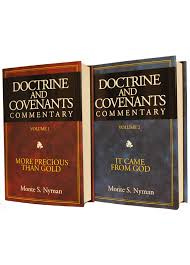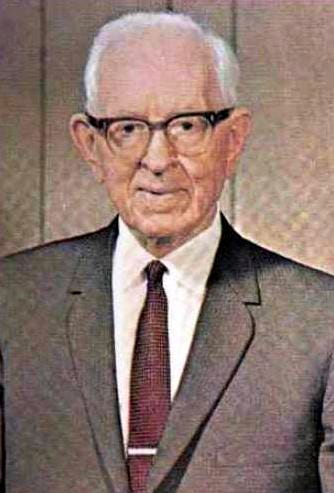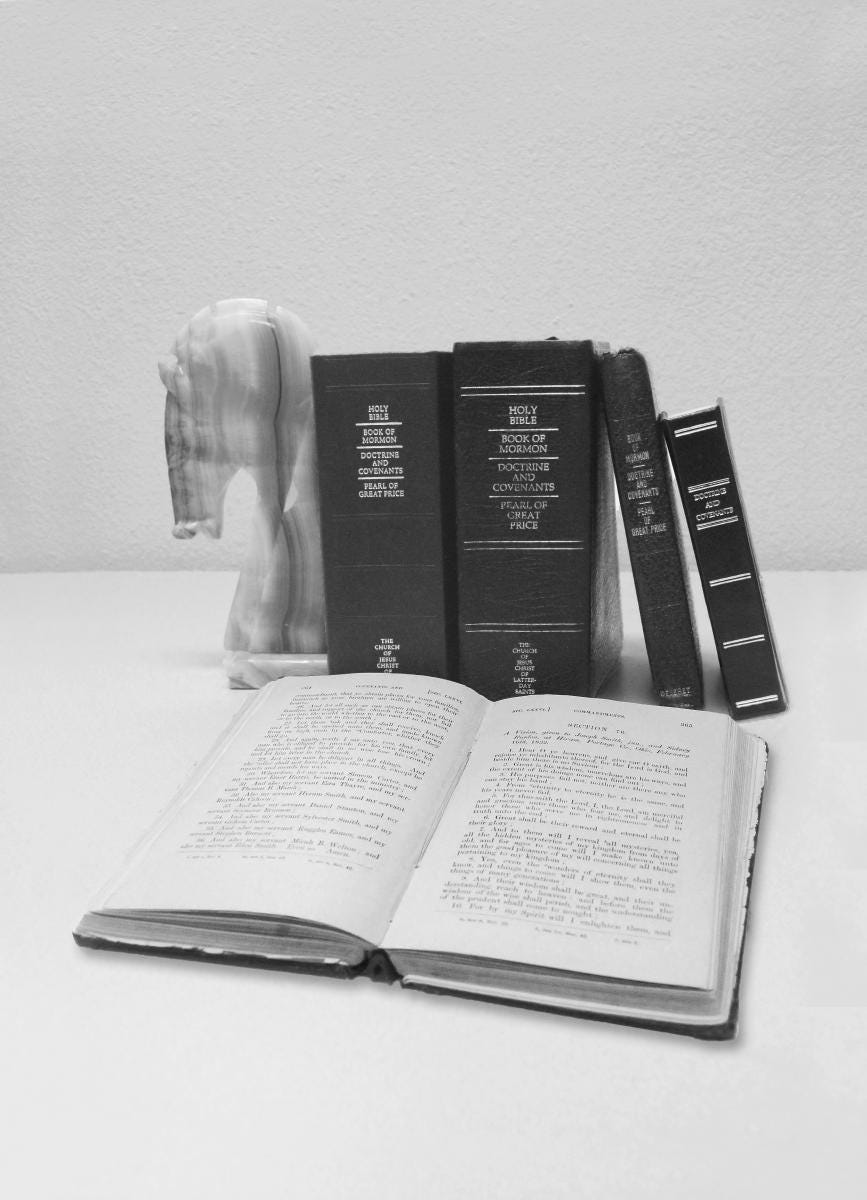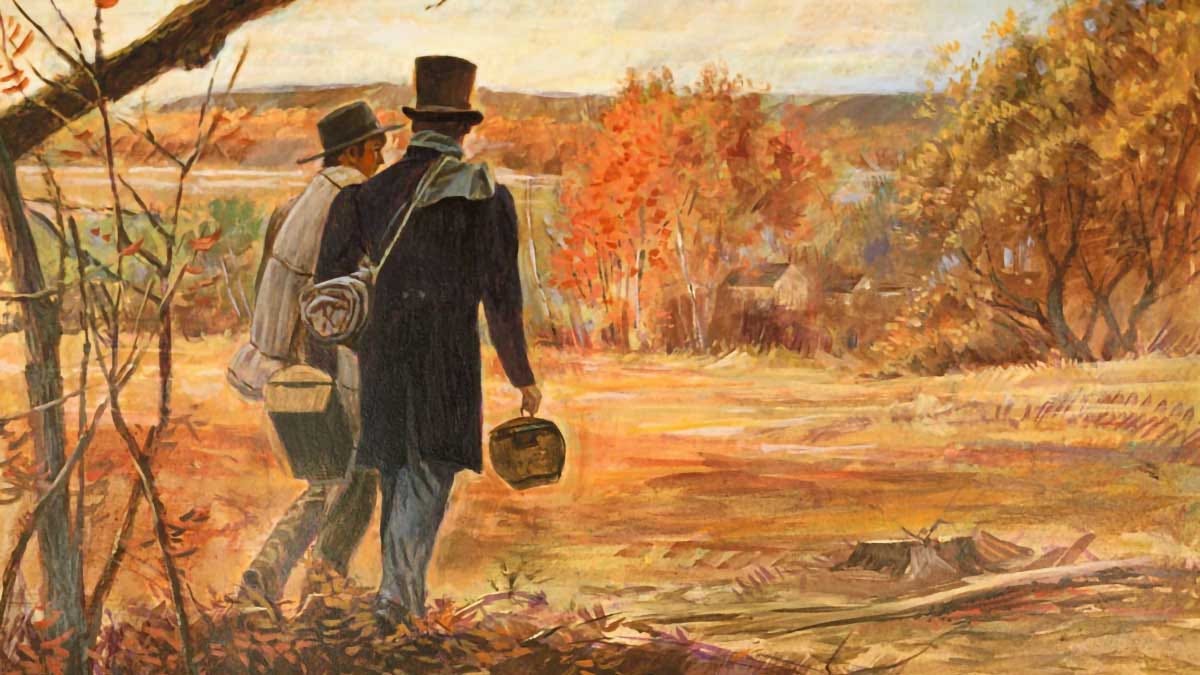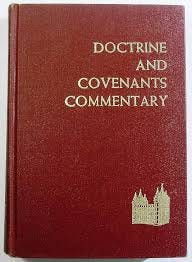Vindicating the Cause of our Redeemer
Historical Background and Reflections on Doctrine and Covenants Section 71
What is the historical background for Doctrine and Covenants Section 71?
In his book A Joseph Smith Chronology, J. Christopher Conkling writes:
Nov. 15, 1831
The commandments are ready to be taken to Missouri for printing, and Oliver Cowdery and John Whitmer leave for Independence. Thereafter Joseph spends his time on translating the scriptures with Sidney Rigdon as scribe, which he calls “this branch of my calling.” (HC 1:238) Joseph does this until he receives D&C 71, which calls Joseph and Sidney on missions.
Dec. 3, 1831
Joseph and Sidney travel to Kirtland to begin their mission. (p. 29)
In his book The Revelations of the Prophet Joseph Smith, Lyndon W. Cook sheds more light on the historical background for this section:
Date. 1 December 1831.
Place. Hiram, Portage County, Ohio.
Historical Note. Section 71 directed Joseph Smith and Sidney Rigdon to proclaim the gospel and “confound” their enemies. Ezra Booth, Simonds Ryder, and others had not remained quiet after their defection from the Church. Booth had published nine derogatory letters in the Ohio Star (Ravenna), and both Ryder and Booth had denounced Mormonism in local public meetings. In addition, they sought to traduce the character of Joseph Smith.
Following the instructions of section 71, the Prophet and Sidney Rigdon stopped translating the Bible and began traveling and preaching locally, particularly in Shalersville and Revenna, to mitigate public prejudice against the new Church.
Publication Note. Section 71 was first published as section 90 in the 1835 edition of the Doctrine and Covenants. (p. 117)
In his chapter “Ezra Booth and Isaac Morley” in Revelations in Context, Matthew McBride shares more details concerning the historical background for D&C 71:
“Confound Your Enemies”
Shortly after his return to Ohio, Ezra Booth parted ways with the Church in a very public fashion. Because his experience did not match his expectations of how Zion should look or how Joseph Smith should behave, he first wavered and then abandoned his faith. Beginning that October, the Ohio Star, a newspaper located in Ravenna, Ohio, began publishing a series of letters Booth penned, heavily criticizing Joseph Smith and the Church.
By December his letters had even started to hinder missionary work, and Joseph Smith received two revelations in December 1831 and January 1832, now found in Doctrine and Covenants 71 and 73. They challenged Booth and other dissidents such as Symonds Ryder to “bring forth their strong reasons against the Lord.” They also encouraged Joseph and Sidney Rigdon to preach actively: “Confound your enemies; Call upon them to meet you both in publick and in private.”22
Though Sidney Rigdon challenged Booth and Ryder to public debate, they declined, perhaps aware of Rigdon’s reputation as a fierce debater. Rigdon preached in Ravenna, Ohio, and in other locations, refuting Booth’s claims. Although Booth’s letters had a dampening effect on missionary work, that effect was short-lived.
Tragically, Booth’s cynicism had driven a wedge not only between him and the restored Church but also between him and his earlier spiritual experiences. He ultimately “abandoned Christianity and became an agnostic.”23 (p. 134)
In their Doctrine and Covenants Commentary, Smith and Sjodahl introduce this section as follows:
Oliver Cowdery and John Whitmer left, at the appointed time, for Independence, and the Prophet resumed his work on the Bible revision, with Sidney Rigdon as secretary. On December 1st, however, this Revelation was received, in which they were instructed to discontinue, for the time being, their Bible studies, and to take up missionary work in the neighborhood of Kirtland, and elsewhere. This was necessary because of the enmity that had been aroused, and the ignorance concerning the Church, that prevailed among the people generally. (p. 422)
This is Bruce R. McConkie’s section heading for D&C 71:
Revelation given to Joseph Smith the Prophet and Sidney Rigdon, at Hiram, Ohio, December 1, 1831. The Prophet had continued to translate the Bible with Sidney Rigdon as his scribe until this revelation was received, at which time it was temporarily laid aside so as to enable them to fulfill the instruction given herein. The brethren were to go forth to preach in order to allay the unfriendly feelings that had developed against the Church as a result of the publication of letters written by Ezra Booth, who had apostatized.
I recently obtained copies of Monte S. Nyman’s two volumes of Doctrine and Covenants Commentary. I imagine that there will be more useful commentary in these volumes as well.
Nyman begins his commentary on this section with the historical setting as recorded in the History of the Church, or Joseph Smith’s introduction to this section:
After Oliver Cowdery and John Whitmer had departed for Jackson County, Missouri, I resumed the translation of the Scriptures, and continued to labor in this branch of my calling with Elder Sidney Rigdon as my scribe, until I received [Doctrine and Covenants 71] (HC, 1:238). (Monte S. Nyman, Doctrine and Covenants Commentary, Vol. 2., It Came from God, p. 5)
In his book Latter-day Prophets and the Doctrine & Covenants, Roy W. Doxey also begins each section with the Prophet Joseph Smith’s own introduction to the sections.
Doxey’s work also includes many great quotations from Latter-day prophets on the Doctrine & Covenants. On this section, Doxey shares the following commentary by Joseph Fielding Smith:
Ezra Booth, who apostatized after his return from Missouri, did all in his power to injure the Church. He was responsible for the publication of the earliest attacks against the Church. He also caused articles to be published in the press among which were some scandalous letters published in the Ravenna Ohio Star, which created a bitter spirit on the part of many people. December 1, 1831, the Lord gave a revelation to Joseph Smith and Sidney Rigdon [Sec. 71] in which the Lord said: [Sec. 71:1, quoted.] They were to go forth with a challenge to their enemies and traducers calling upon them to meet in discussion and to meet them in private and thus refute the many falsehoods and put an end to the scandalous tirades of Ezra Booth. They were promised that no weapon formed against them should prosper, and that those who raised their voices in opposition would be confounded.
In obedience to this call Joseph Smith and Sidney Rigdon left Kirtland December 3, 1831, and went forth in Kirtland, Shalersville, Ravenna and other places preaching boldly the truth and calling on their traducers to meet them and face their falsehoods. This was rather an unusual condition. Quite generally the Lord counsels his servants not to engage in debates and arguments, but to preach in power the fundamental principles of the Gospel. This was a condition that required some action of this kind, and the Spirit of the Lord directed these brethren to go forth and confound their enemies which they proceeded immediately to do so, as their enemies were unable to substantiate their falsehoods and were surprised by this sudden challenge so boldly given. Much of the prejudice was allayed and some friends made through this action. (CHMR, 1948, 2:40.) (p. 557)
With this historical background in mind, let’s examine and appreciate the revelation itself:
Behold, thus saith the Lord unto you my servants Joseph Smith, Jun., and Sidney Rigdon, that the time has verily come that it is necessary and expedient in me that you should open your mouths in proclaiming my gospel, the things of the kingdom, expounding the mysteries thereof out of the scriptures, according to that portion of Spirit and power which shall be given unto you, even as I will.
Verily I say unto you, proclaim unto the world in the regions round about, and in the church also, for the space of a season, even until it shall be made known unto you.
Verily this is a mission for a season, which I give unto you.
Wherefore, labor ye in my vineyard. Call upon the inhabitants of the earth, and bear record, and prepare the way for the commandments and revelations which are to come.
Now, behold this is wisdom; whoso readeth, let him understand and receive also;
For unto him that receiveth it shall be given more abundantly, even power.
Wherefore, confound your enemies; call upon them to meet you both in public and in private; and inasmuch as ye are faithful their shame shall be made manifest.
Wherefore, let them bring forth their strong reasons against the Lord.
Verily, thus saith the Lord unto you—there is no weapon that is formed against you shall prosper;
And if any man lift his voice against you he shall be confounded in mine own due time.
Wherefore, keep my commandments; they are true and faithful. Even so. Amen. (D&C 71:1-11)
This is amazing.
The Lord called His servants Joseph Smith and Sidney Rigdon on a mission to proclaim His Gospel, to preach the things of the Kingdom, to expound the mysteries of the Kingdom using the scriptures, to testify of truth, to prepare the way for the commandments and revelations, and even to confront and confound their enemies. The Lord promised that as long as they were faithful, their enemies would be confounded and brought to shame.
It was necessary for a short time for Joseph and Sidney to preach the Gospel, to prepare the way for more commandments and revelations, and to confound their enemies because of the libelous reports of apostates such as Ezra Booth, Simonds Ryder, and others. In essence, the Lord, through His servant Joseph Smith, challenged these enemies, dared His enemies to bring what they considered to be their “strong reasons” against Him. The Lord’s challenge in this section reminds me of a similar challenge recorded in the Book of Isaiah and the Book of Mormon:
And the Lord is near, and he justifieth me. Who will contend with me? Let us stand together. Who is mine adversary? Let him come near me, and I will smite him with the strength of my mouth.
For the Lord God will help me. And all they who shall condemn me, behold, all they shall wax old as a garment, and the moth shall eat them up. (2 Nephi 7:8-9)
Joseph Smith and Sidney Rigdon went forth in the power of God to proclaim the truth and confound their enemies, confident in the Lord’s promise that no weapon that was formed against them would prosper, and that any man who lifted his voice against them would be confounded in the Lord’s own due time.
This is Smith’s and Sjodahl’s commentary on this section:
Expounding the mysteries] The Prophet, by this time, had learned many great and glorious truths, partly by the direct Revelations he had received, and partly by close study of the Scriptures. To the world, many of these truths were “mysteries.” The time had come to reveal them, and when they were revealed, or unveiled, they would be mysteries no longer. When the gospel of Christ was first preached by Peter, Paul, and the other Apostles of their day, the doctrine of the Incarnation was a mystery (I. Cor. 2:7; I. Tim. 3:16); the doctrine of the resurrection (I. Cor. 15:51), and the gathering of the Gentiles into the Church (Col. 1:26, 27) were mysteries. In our dispensation, the doctrines of the gathering and of the building of temples and the City of Zion are as great mysteries, until they are explained by the Holy Spirit of Promise. The Prophet Joseph and Sidney Rigdon were now to go forth and proclaim these and other truths to the Church and the world, for a season (vv. 2, 3).
-
-
Prepare the way] One object was to prepare the public for the appearance of the book of Commandments and Revelations, which was about to be published. The world generally supposed that the volume containing divine Revelations had been closed, and that no further revelations would be given. This error they were to correct as a preparation for the acceptance of the new volume.
-
-
Confound your enemies] Another object was to meet and refute slanderers. “Call upon them to meet you both in public and in private.” “Let them bring forth their strong reasons against the Lord” (v. 8) Attacks upon the servants of the Lord are really directed against Him.
Ezra Booth had just published a series of anti-”Mormon” letters, in an Ohio paper. These letters, the Prophet says, “by their coloring, falsity, and vain calculations to overthrow the work of the Lord, exposed his weakness, wickedness, and folly, and left him a monument of his own shame for the world to wonder at.” It was to meet the situation that had been created by this hostile agitation, that Joseph and Sidney were called to take this mission. Sometimes it is wise to ignore the attacks of the wicked; at other times it is necessary to meet them, fearlessly and with ability. (pp. 422-423)
What happened? What was the result of this mission? In their General Notes on this section, Smith and Sjodahl record:
Referring to this mission, the Prophet Joseph says:
“From this time [December 4th, 1831] until the 8th or 10th of January, 1832, myself and Elder Rigdon continued to preach in Shalersville, Ravenna, and other places, setting forth the truth, vindicating the cause of our Redeemer: showing that the day of vengeance was coming upon this generation like a thief in the night; that prejudice, blindness and darkness filled the minds of many; and caused them to persecute the truth Church, and reject the true light; by which means we did much towards allaying the excited feelings which were growing out of the scandalous letters then being published in the Ohio Star, at Ravenna, by the before mentioned Ezra Booth” (Hist. of the Church, Vol. I., p. 241).
One reason why the Church is hated is that it is practical. It makes men and women practice what they profess to believe. The world is fond of something pretty, something poetical, in religion. It delights in eloquent, glowing descriptions of the land “over there,” which no living mortal has seen in the flesh; it likes to hear about crowns, harps, white robes, and angels’ wings; it enjoys elegies of dead heroes, and, to a moderate extend, mild suggestions concerning social reforms, which nobody needs to take offense at. Bu the Church is not such a nerve-soothing, caressing religion. It is a message from Almighty God to a world steeped in idolatry and sin; it comes like the rolling thunders of Sinai, or the prophecies of Elijah to Ahab and Jezebel, and it makes Carmel ring with the frantic cries of the prophets of Baal. It does something. It takes the poor out of the clutches of oppression and makes them free and independent. It interferes with the profits of those who live on human weakness and shame. It opens a new era in which there will be no room for the government of Satan. No wonder it is hated! Christ, too, was hated because He did something. He might have denounced with impunity the Pharisees and hypocrites and whited sepulchers, but when He interfered with the money-bags on the temple ground, He was crucified. It was always thus. (pp. 423-424)









